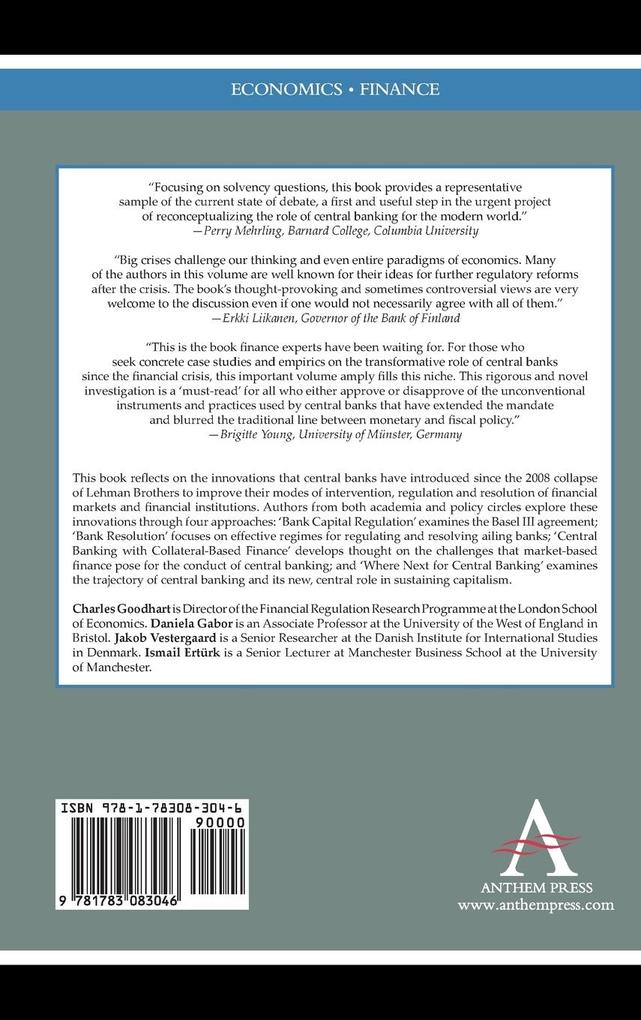
Zustellung: Sa, 31.05. - Mi, 04.06.
Versand in 1-2 Wochen
VersandkostenfreiBestellen & in Filiale abholen:
This book reflects on the innovations that central banks have introduced since the 2008 collapse of Lehman Brothers to improve their modes of intervention, regulation and resolution of financial markets and financial institutions.
Inhaltsverzeichnis
Preface; 1. Introduction; 2. Constraining Discretion in Bank Regulation; 3. Fallacies and Irrelevant Facts in the Discussion of Capital Regulation; 4. Complexity, Interconnectedness: Business Models and the Basel System; 5. At the Brink of Insolvency: Shallow Recapitalization Exercise Fails to Bolster Europe's Ailing Banks; 6. Bank Resolution in Comparative Perspective: What Lessons for Europe?; 7. Resolving Problem Banks: A Review of the Global Evidence; 8. Bank Resolution in New Zealand and Its Implications for Europe; 9. Collateral and Monetary Policy; 10. The ECB and the Political Economy of Collateral; 11. The Backstory of the Risk-Free Asset: How Government Debt Become "Safe"; 12. Central Banking Post-Crisis: What Compass for Uncharted Waters?; 13. Reconceptualising Central Bank Unconventional Policies: Long Positions on No-Growth Capitalism; 14. The Future Relationship between Central Banks and Governments: What Are Central Banks For?; 15. Is New Governance the Ideal Architecture for Global Financial Regulation?; Contributors; Index
Mehr aus dieser Reihe
Produktdetails
Erscheinungsdatum
01. Dezember 2014
Sprache
englisch
Seitenanzahl
292
Reihe
Anthem Frontiers of Global Political Economy and Development
Herausgegeben von
Daniela Gabor, Charles Goodhart, Jakob Vestergaard
Verlag/Hersteller
Produktart
gebunden
Gewicht
628 g
Größe (L/B/H)
235/157/22 mm
Sonstiges
HC gerader Rücken kaschiert
ISBN
9781783083046
Entdecken Sie mehr
Bewertungen
0 Bewertungen
Es wurden noch keine Bewertungen abgegeben. Schreiben Sie die erste Bewertung zu "Central Banking at a Crossroads" und helfen Sie damit anderen bei der Kaufentscheidung.
























